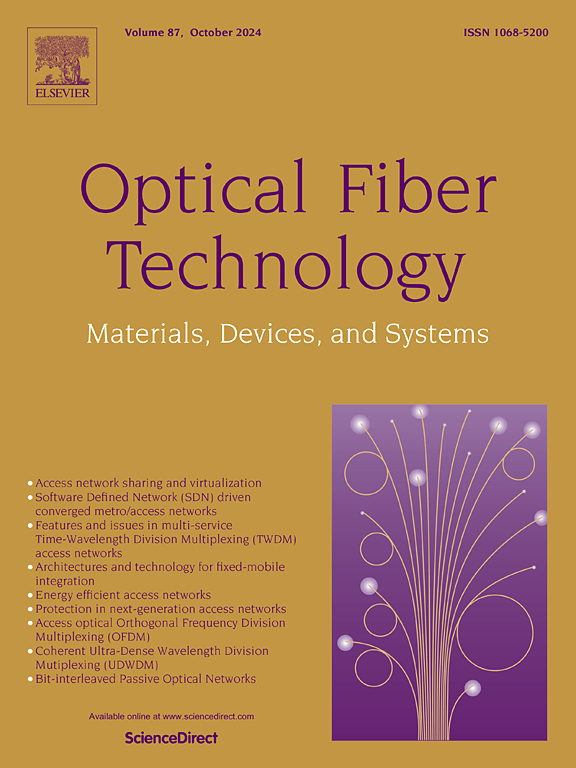A fast MIMO frequency domain equalization for MDM systems
IF 2.6
3区 计算机科学
Q2 ENGINEERING, ELECTRICAL & ELECTRONIC
引用次数: 0
Abstract
In mode division multiplexing (MDM) systems, mechanical or acoustic disturbances can cause modal coupling changes on timescales as short as tens of microseconds, which requires multi-input multi-output (MIMO) frequency-domain equalization (FDE) be able to adapt quickly. Based on the least mean squares Newton (LMS-Newton) algorithm, the LMS-Newton–Nesterov accelerated gradient (LMS-Newton–Nesterov) algorithm is proposed for six-mode MDM transmission systems. The Nesterov accelerated gradient method accelerates convergence by adding a correction factor, subtracting the momentum term from the loss function to adjust the current direction, and then updating the parameters based on this gradient. Simulation results suggest that the LMS-Newton–Nesterov algorithm converges faster to a lower asymptotic mean-square error (MSE) than the LMS and LMS-Newton algorithms, and the convergence rate would be correspondingly enhanced by 83.3% and 66.7%, respectively. After the LMS-Newton–Nesterov algorithm, the equalized signal is more ideal than the LMS and LMS-Newton algorithm. In six-mode MDM systems with QPSK, the LMS-Newton–Nesterov algorithm outperforms LMS and LMS-Newton algorithms by and at a symbol error rate (SER) of , respectively. The research results have guiding significance for improving the performance of MIMO FDE.
求助全文
约1分钟内获得全文
求助全文
来源期刊

Optical Fiber Technology
工程技术-电信学
CiteScore
4.80
自引率
11.10%
发文量
327
审稿时长
63 days
期刊介绍:
Innovations in optical fiber technology are revolutionizing world communications. Newly developed fiber amplifiers allow for direct transmission of high-speed signals over transcontinental distances without the need for electronic regeneration. Optical fibers find new applications in data processing. The impact of fiber materials, devices, and systems on communications in the coming decades will create an abundance of primary literature and the need for up-to-date reviews.
Optical Fiber Technology: Materials, Devices, and Systems is a new cutting-edge journal designed to fill a need in this rapidly evolving field for speedy publication of regular length papers. Both theoretical and experimental papers on fiber materials, devices, and system performance evaluation and measurements are eligible, with emphasis on practical applications.
 求助内容:
求助内容: 应助结果提醒方式:
应助结果提醒方式:


